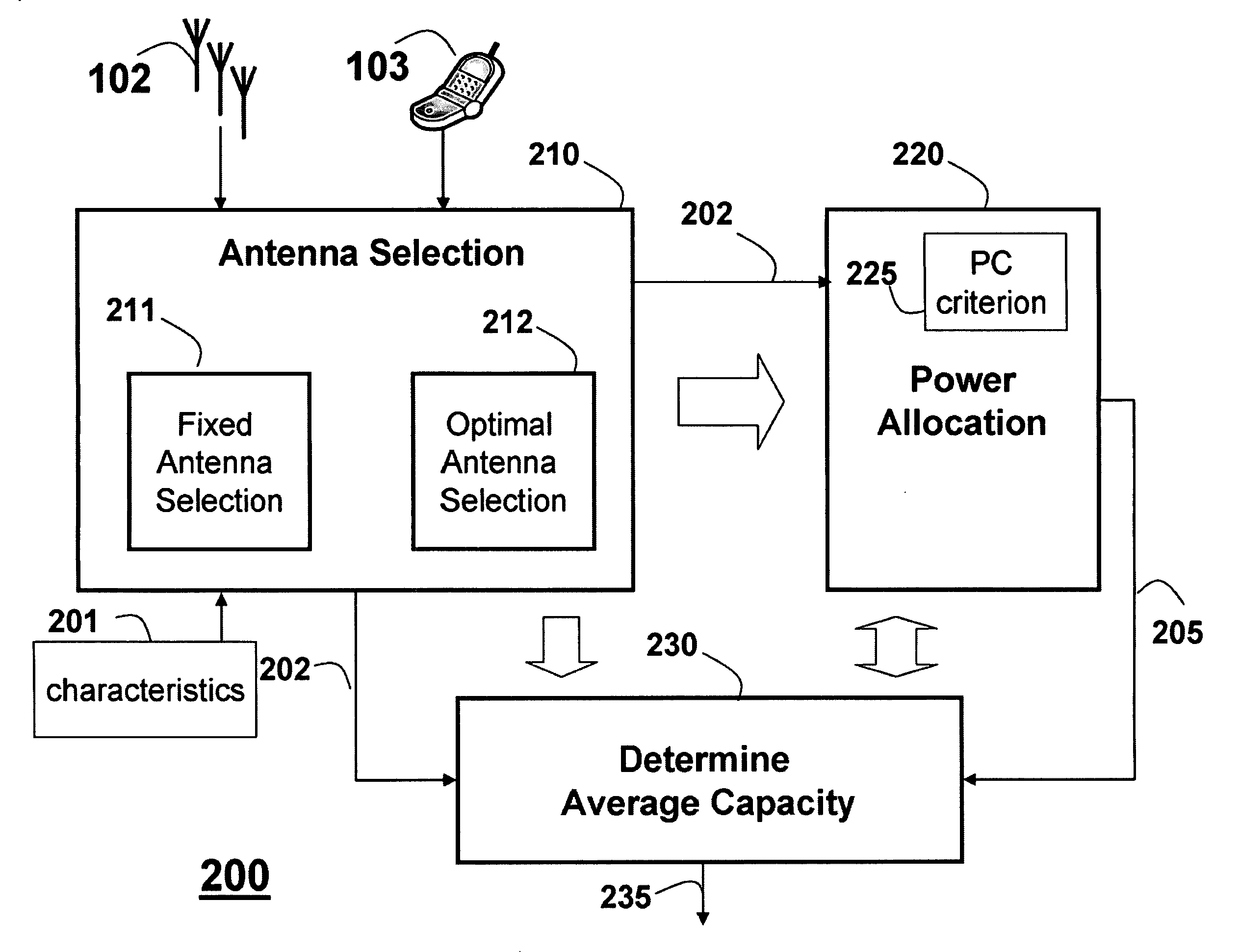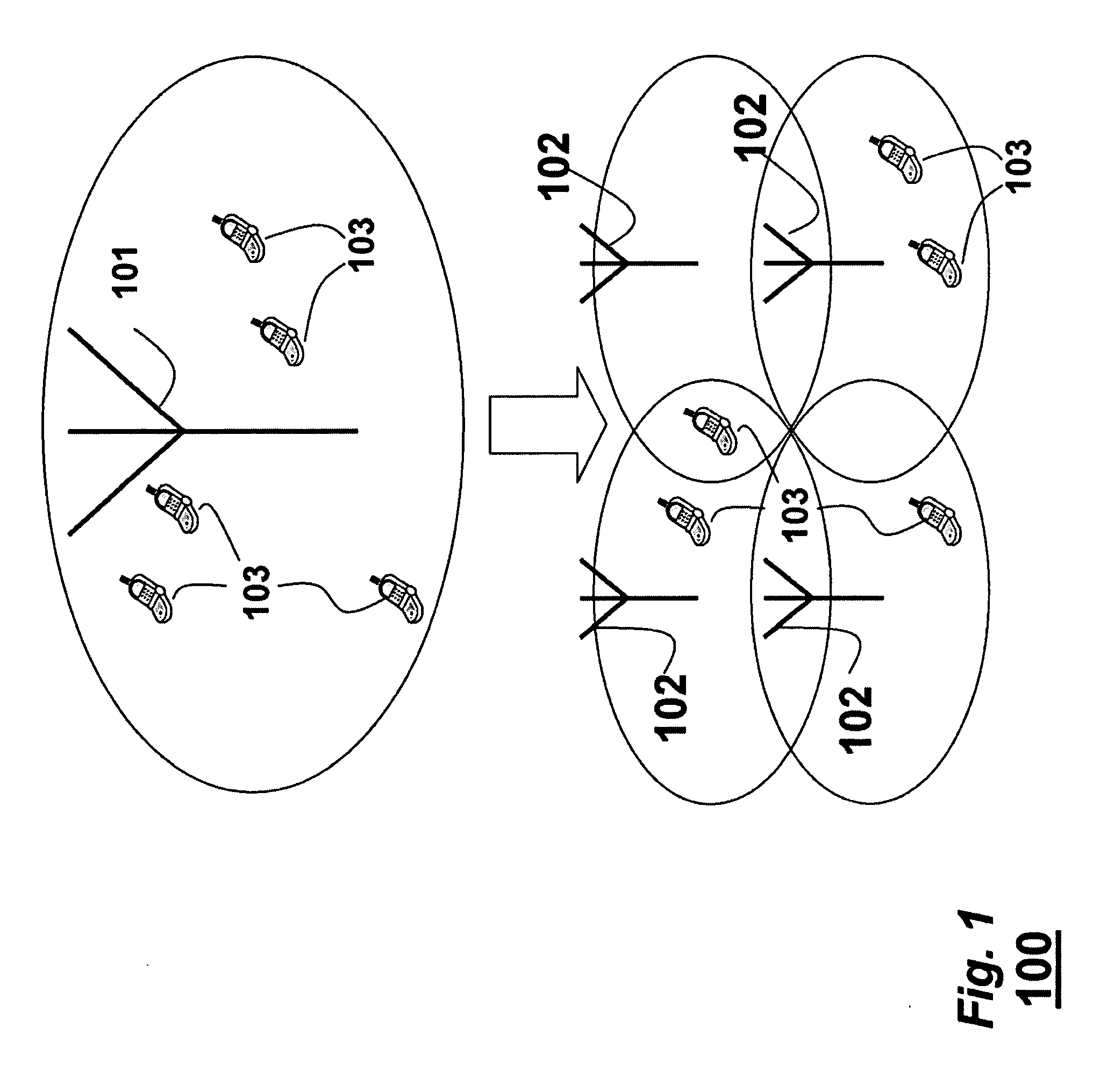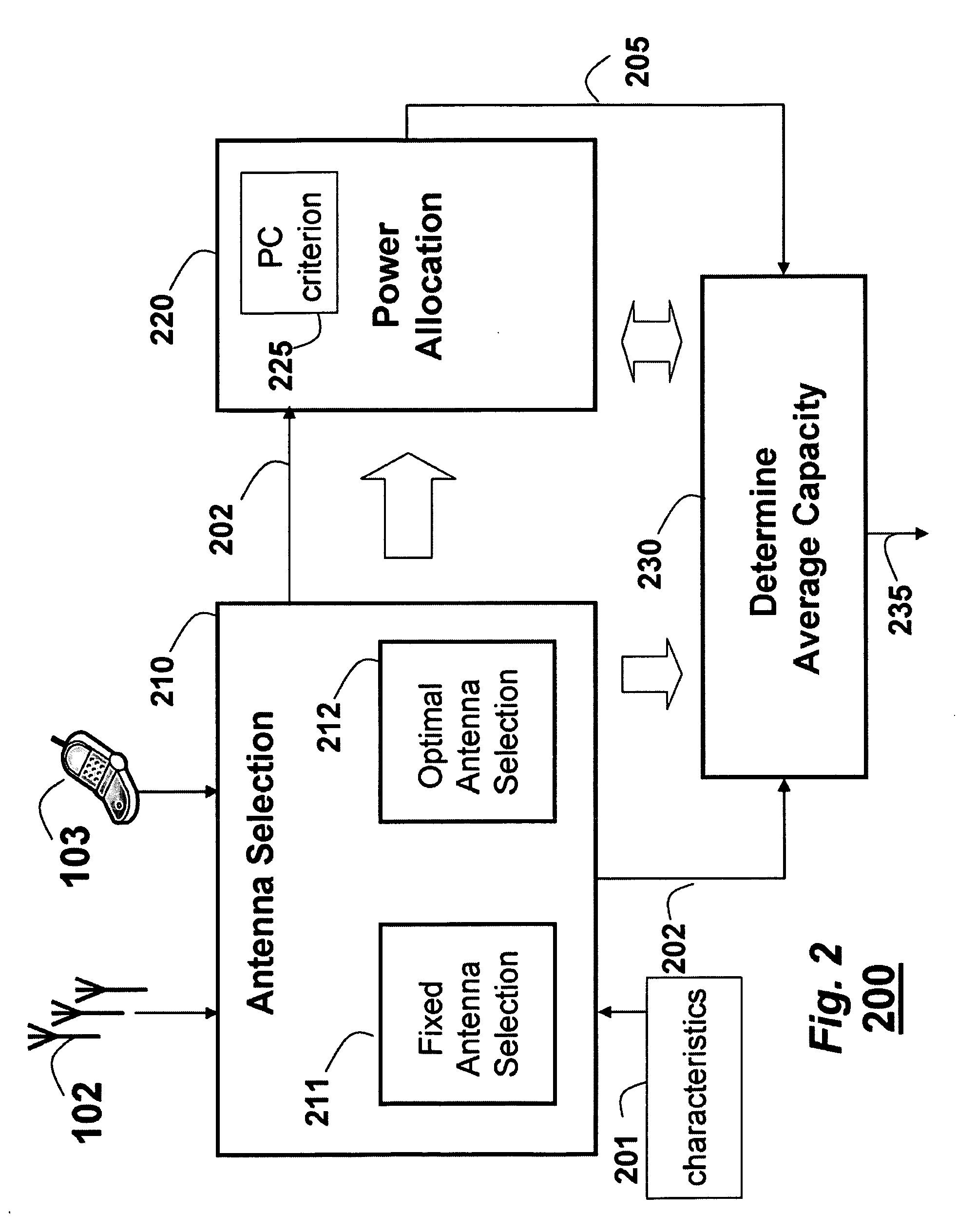Hot-Spot Wireless Access Exploiting Shadowing Diversity of Distributed Antennas
a distributed antenna and hotspot technology, applied in repeater circuits, frequency-division multiplexes, wireless commuication services, etc., can solve the problems of increasing the number of mobile devices a cell can support as well as the size of the cell, increasing the power consumption of the transmitting device, and limiting the capacity of the system. , to achieve the effect of maximizing the signal-to-leakage ratio (slr) ratio and improving the capacity of the system
- Summary
- Abstract
- Description
- Claims
- Application Information
AI Technical Summary
Benefits of technology
Problems solved by technology
Method used
Image
Examples
Embodiment Construction
[0018]FIG. 1 shows a distributed antenna system (DAS) 100 used by embodiments of the invention. The system includes a set (one or more) of fixed antennas 102 suitable to relay a wireless signal to and from a set (one or more) of mobile device 103. The antennas 102 are connected to a common RF transceiver, e.g., a base station not shown, via a transport medium that provides wireless service within a relatively small geographic area or structure.
[0019]From time to time, antenna selection is performed for a mobile device 103. The mobile device 103 is the one which starts or continues to receive or transmit data packages through one of the antenna 102. The antenna selection could be performed once per communication session or for any or for every data package transmittal. The DAS 100 might have limited frequency band under limited space, e.g., in-door communications, data transmission in a wireless hot-spot football stadium.
[0020]FIG. 2 show a system and a method 200 according to embodi...
PUM
 Login to View More
Login to View More Abstract
Description
Claims
Application Information
 Login to View More
Login to View More - R&D
- Intellectual Property
- Life Sciences
- Materials
- Tech Scout
- Unparalleled Data Quality
- Higher Quality Content
- 60% Fewer Hallucinations
Browse by: Latest US Patents, China's latest patents, Technical Efficacy Thesaurus, Application Domain, Technology Topic, Popular Technical Reports.
© 2025 PatSnap. All rights reserved.Legal|Privacy policy|Modern Slavery Act Transparency Statement|Sitemap|About US| Contact US: help@patsnap.com



